
Learning a foreign language isn’t always easy, especially when it comes to vocabulary. (I’ve been studying Japanese for years and still have trouble remembering words!) Luckily, there are many ways you can learn English vocabulary—and some of them are even a little fun!
In this guide, we go over the top five methods you can use to learn English words and give you a few tips on how to find English words to study.
Feature image: Nicolas Raymond/freestock.ca
Method 1: Make Flashcards
One of the most popular (and arguably best) ways to learn English vocabulary is to use flashcards. Each flashcard will have one English word written on the front and the word’s translation or definition on the back.
To study them, you’ll look at one side of a card and say the word on it in the opposite language before you look at the other side of the card (so if you were looking at the English side, for example, you’d say the word in your native language).
Flashcards are excellent resources because they help you memorize vocabulary words both quickly and effectively. They’re also customizable and reusable. Both paper and digital cards are available, and you can make your own cards, buy a pre-made deck, or download a deck online.
By the way: we have built the world's best online TOEFL course. Get online practice (TPO-sytle!) and individual grading and feedback on Speaking and Writing.
To be fair, it's possible to get a good TOEFL score studying alone. But PrepScholar is the world's most effective TOEFL course if you are worried about the TOEFL and are struggling to improve your score.
Learn how you can improve your TOEFL score by 15 points today.
Pros
- Flashcards are easy to make. If you’re making paper cards, all you need are note cards (or small pieces of paper), a pencil or pen, and a list of the words you want to study. For digital cards, all you need is a computer and some software or a website to make them with.
- They’re interactive, especially if you make them yourself. With paper flashcards, you must write down all of the words you want to study as well as physically thumb through the cards, helping you concentrate on what each word means.
- Flashcard decks are easy to expand if you find new vocabulary you want to study. All you need to do is make a new flashcard and then add it to your deck—that’s it!
- They’re easy to randomize. Mixing up the order in which you study is essential to ensuring that you fully understand the meanings of the words you’re learning.
Cons
- Making flashcards is time consuming. Though not particularly difficult to make, flashcards can take a long time to create (regardless of whether you’re making paper or digital cards). Therefore, make sure you have ample time to set aside when making them.
- Paper flashcards are bulky and take up a lot of space. As a result, they’re often difficult to take places and use for on-the-go reviewing. If you’re hoping to brush up on your English vocabulary at places other than home, consider bringing only some of your cards with you or using a more compact resource such as a list (see method 2 below).
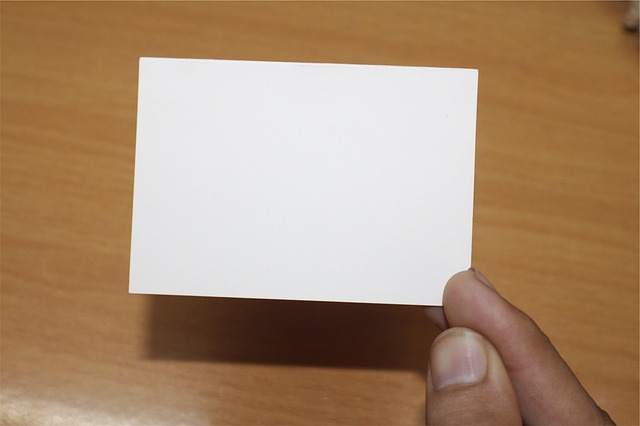
How to Use This Method Effectively
Flashcards must be used in specific ways in order to be effective for English-language acquisition. These methods differ depending on whether you’re studying with paper or digital flashcards.
Paper Flashcards
Paper flashcards are best for those who prefer more traditional study methods and want a break from computers and smartphones.
You can use any blank note cards to make your flashcards. Once you have some, start making your cards: with each card, write an English word (spelled correctly!) on the front and its translation in your native language (or an image of the word) on the back. You may also include on the front the word’s part of speech and/or a sample English sentence.
When finished, begin studying your flashcards using the “waterfall” method. With this method, you’ll study cards in subsets (smaller stacks of cards) and get to review harder English words more often than words you already know.
We explain the waterfall method in more detail in our GRE vocabulary guide. However, to summarize briefly, here’s how it works:
1. Go through all of your flashcards and make two piles: a “Know It” pile (with words you know) and a “Struggled” pile (with words you don’t know). Put the “Struggled” pile to the right of the “Know It” pile:

2. Next, go through the cards in your “Struggled” pile one at a time. As you do this, make a second “Know It” pile for words you know (put this pile to the right of your original “Know It” pile). For words you don’t know, put them back in your “Struggled” pile.
3. Continue this process of going through your “Struggled” pile and making new “Know It” piles until you only have four to five cards left in your “Struggled” pile. Here’s what your cards should look like:

4. Now, work your way back up your “waterfall” of cards, starting with your “Struggled” pile. Go through this stack of cards until you know all of the words in it. You might have to go through it several times before you can remember all of the words.
5. Combine the “Struggled” pile with the “Know It” pile directly to the left of it. Now, you’ll go through all of the words in both piles (combined as one) until you know all of these words.
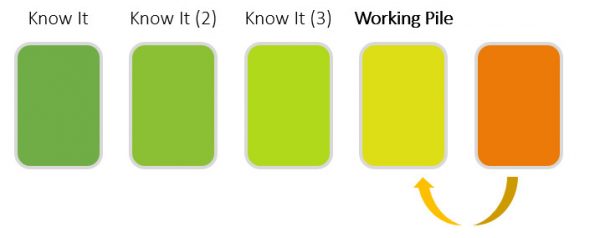
6. Repeat step 5 until you’ve gone through all of the cards in your deck, from right to left. You should now know the meanings of all of the English words on your flashcards!
Digital Flashcards
Some people (myself included!) prefer studying foreign languages with digital, or computerized, flashcards. These types of flashcards are accessible through software applications, websites, and/or apps.
While there are many free flashcard-making websites and programs available, my personal favorites are Anki and Memrise.
Anki is a free downloadable software through which you can make your own flashcards or download pre-made decks submitted by users. It uses spaced-repetition software (SRS) to show you difficult cards more often—similar to the waterfall method described above—making it convenient and easy to use.
Memrise, on the other hand, is a free language-learning website that offers tons of pre-made decks. It’s a little flashier and more game-like than Anki, so if you’d prefer a more “fun” way to learn English words, this is a great website (and app!) to try out.

Method 2: Make a Study List
Another helpful method is to make a list of all of the English-vocabulary words you want to learn. A list is different from flashcards in that it has all of the words you need to know in one place (instead of on separate cards). If you don’t want to deal with the hassle of using note cards, a study list is a solid option.
Pros
- The biggest benefit is that lists are easy to expand as you come across new words you want to know. For example, if you saw an English word you didn’t know on a sign at a restaurant, you can simply take out your list and write it down.
- You can use your list as a base for other study methods. Lists are helpful resources for identifying specific words to put on flashcards and use in vocabulary quizzes (see method 4).
- A list is less bulky than flashcards. With a list, you can keep track of dozens of words on a single sheet of paper, taking up far less space than hundreds of flashcards.
- It’s easy to make. All you need to do is write out each word, its part of speech (optional), and its meaning in your native language—nothing more!
Cons
- They’re pretty tedious and boring to work with. Unlike flashcards, which are highly interactive (you can make cards, flip through them, shuffle them, etc.), lists are static resources with few stimulating features.
- They make it difficult to randomize words. You’ll learn English words faster by sporadically mixing up the order in which you study them, but it’s a challenge to randomize words on lists since you can’t physically rearrange them as you can with flashcards.
How to Use This Method Effectively
Write your English words on the left side of a piece of paper, from top to bottom. I suggest numbering the words and adding their parts of speech, too (this is helpful because it teaches you how to use the words).
Then, on the right side of the paper, write the translation of each word in your native language (again, from top to bottom so that each translation aligns horizontally with its English equivalent). Here’s an example:
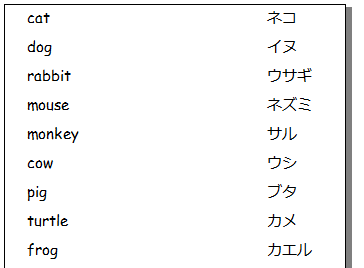
When you’re ready to start studying, get a separate sheet of paper (or your hand) to cover up the words on the right. You’ll then move this sheet down as you read and define each English word on the left. Make sure to say each word aloud in English before translating it into your native language.
Once you’ve defined a word, move your sheet of paper down to check that you’ve translated it correctly:
Want to improve your TOEFL score? We have the world's leading TOEFL course.
Built by world-class instructors from Harvard and MIT, the course offers individual review, interactive lessons, and realistic online praactice, at an affordable price! It's the fastest way to get your target TOEFL score.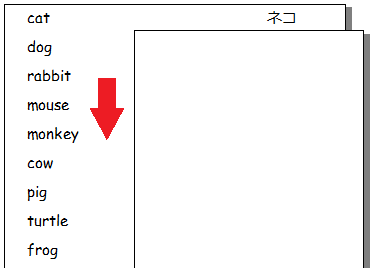
As you go through your list, consider marking any words you’re having trouble remembering. This way you’ll know right away which words you need to spend a little more time on than others.
Here are some additional ways you can use your list to learn English vocabulary:
- Study words in reverse. With this method, you’ll start at the bottom of your list and reveal words one at a time by moving your sheet up instead of down. This prevents you from simply memorizing the list in one particular order.
- Cover up the English side so that you must read the words in your native language and then translate them into English. Studying like this ensures you can come up with English equivalents for words all on your own.
These are both great methods to use after you’ve used the main method described above and are more familiar with the English vocabulary on your list.

Method 3: Write Out Words Repeatedly
If you want to practice spelling English words and like doing something physical as you study, writing out words is a solid option to try. With this method, you’ll write out each English word several times as you say it aloud.
If you’ve taken English courses in the past, you’ve probably had homework similar to this (I had to write out new words all the time for Japanese class in junior high and high school!). Although rote memorization isn’t everyone’s cup of tea, it can still be a highly effective way to learn English words.
Pros
- It’s interactive. Unlike flashcards and lists, which you merely look at to study, you’re always doing something when writing out words. If you’re the type who gets easily antsy and likes having something to do with your hands as you study, this is a good method to try.
- It helps you remember how to spell words. Flashcards and lists mainly teach you what a word means, but writing out a word (rather than looking at it briefly) makes it far easier to remember how it’s spelled.
Cons
- Writing out words repeatedly can feel monotonous. Despite being an effective method, rote memorization isn’t a particularly fun way to learn a language and gets tiresome fast.
- You can easily lose focus on a word as you write it again and again. To truly benefit from this method, you need to focus on what each word means and how it’s spelled. Unfortunately, the repetitive motions make it easy to fall into a zombie-like stupor.
How to Use This Method Effectively
The best way to write out words is to have a set number of times you’re going to write them out. Usually, 10 to 20 times is sufficient. Just make sure you’re actively thinking about each word as you write it out: look at the letters and how they’re arranged, pronounce it, and then define it.
I find that it’s helpful to note the translation of each word (in your native language) above your repetitions so that you don’t forget the meanings of any words and can more readily make associations between words in your language and in English.
Finally, I strongly suggest using this method with one of the two methods above (flashcards or a study list) to keep you from getting bored with your studies. Personally, I think the flashcard method is better as it’s more fun and doesn’t require you to make another long list of words.
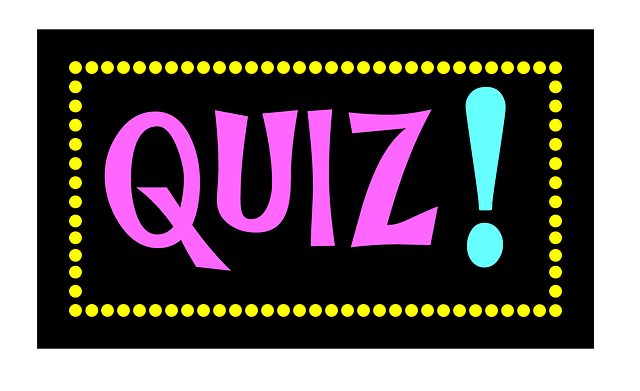
Method 4: Take Vocabulary Quizzes
If you’re tired of flashcards and lists, vocabulary quizzes are a great way to test what you’ve learned and ensure you truly understand the meanings of English words.
Many English-word quizzes are available for free online. While some are traditional tests, others are more game-like; for example, you might find a matching game in which you have to match English words with their meanings (also in English!).
You can also make your own vocabulary quizzes using any of the resources above (flashcards, lists, etc.).
Pros
- They check your English progress by testing what you’ve learned. Quizzes let you see whether you truly know the English words you’ve studied and can use them fluently. If you fail a quiz, you’ll know exactly which words to work on more.
- Most online vocabulary quizzes are free. You can find tons of free, high-quality English-language quizzes and games on websites geared toward students, ESL learners, and general language learners.
Cons
- You can’t really learn words from scratch using quizzes alone. In other words, you’ll need to combine quizzes with one or more of the methods above so you can learn English vocabulary before testing out what you know.
- Some online vocabulary quizzes aren’t super high quality, so make sure you’re choosing ones that have words you are familiar with and no glitches or inaccuracies.
How to Use This Method Effectively
You have two options when it comes to English-vocabulary quizzes: look for pre-made quizzes online, or make your own.
Online Quizzes
If looking for quizzes online, I recommend starting with popular learning websites.
One option is Free Rice, whose “English Vocabulary” mode tests your knowledge of various high-level English words. Each question gives you one English word and four possible synonyms; the answer choices are also in English, so you’ll need to have a high English level in order to do well. For each question you get right, Free Rice donates 10 grains of rice to help end world hunger. So this is an excellent resource to use if you like the idea of helping others as you study!
Quizlet and Cram are two other websites you can use for free. Both offer flashcards, vocabulary lists, quizzes, and games. All you do is choose an English-vocabulary deck (or make your own) and then test yourself using the site’s “Test” feature.
Both websites’ “Test” features are similar to an actual language test: you get a variety of question types, from fill-in-the-blank and matching to multiple choice and true or false. With Cram, however, you can also choose how the system grades your answers. For example, you can make it so you don’t lose any points for errors in punctuation or capitalization.
Making Your Own Quizzes
The best way to make your own English-vocabulary quiz is to use flashcards (see method 1). With flashcards, you can easily randomize the words you’ll get and can’t predict which words will come up.
To make a quiz, get out a sheet of paper and number it 1-20 (or however many questions you want to have). Then, choose a flashcard at random. On your paper, write down the English word shown and (without flipping the card over) its translation or meaning in your native language.
Want to improve your TOEFL score by 15 points?
Registration is now open for our best TOEFL course. We guarantee your money back if you don't improve your TOEFL score by 15 points or more.
PrepScholar TOEFL is online and it features thousands of practice questions and 1-on-1 Speaking and Writing review and feedback.
Don’t check your answers right away by flipping the cards over—rather, wait until you’ve finished your entire quiz and then flip over the flashcards to score your test.

Method 5: Use Vocabulary Words in Conversation and Writing
Although the methods above are extremely useful for memorizing English words, you’ll never retain the words you learn unless you actually use them in conversation and writing. In short, context is key!
Pros
- You’ll learn more quickly how to use and say words you’ve studied. Although you should always say words aloud when you first learn them, using them in conversation (especially with native English speakers) is by far the best way to ensure you’re actually pronouncing and using them correctly.
- You’ll remember words better by using them in sentences, so always look for opportunities to use words you learn in both conversation and writing.
- You can get feedback when conversing with or writing to native English speakers. If you’re not sure whether you’re using a word correctly, you can ask others to give you feedback or explain how they themselves use specific words in English.
Cons
- It’s not always easy to find people to use English with. If you don’t live in an English-speaking country, native speakers can be hard to find, making it difficult to actively use the words you learn in conversation and writing.
- You need someone to check that you’re using the words correctly. If you’re using a word in writing, for example, but aren’t sure whether you’re using it correctly, you’ll need to ask a native speaker to check it for you. This can be tough to do, though, if you don’t have access to any native speakers.
- It can be intimidating to use new words with others. When speaking another language, we tend to rely on using only the words we know so we can avoid making any obvious mistakes. Unfortunately, this fear can ultimately hinder your ability to learn new words and use them with confidence.
How to Use This Method Effectively
If you’d like to use new English words in conversation, you’ll first need to find native English speakers or other English-language learners to practice speaking with. If you don’t live in an English-speaking country, try looking for English-language groups or clubs you can join in your area. Meetup, for example, is a handy website you can use to search for language groups around you (you can even create one yourself!).
Another option for English-speaking practice is to pay for video chat language lessons. Fees vary depending on the company you use and how many hours you want to practice. Some of the best websites to try include Live Lingua, Verbalplanet, and italki.
But what about writing in English? If you want to practice using words in writing, start keeping a journal and then have other people (preferably native English speakers) read your work to check that you’re correctly using new vocabulary.
My personal recommendation is a free website called Lang-8 on which you write various posts (such as journal entries, questions, stories, etc.) in your target language. Once you make a post, native English speakers then correct your entries and offer feedback. I’ve used this website many times before while studying Japanese, and it’s always been an extremely helpful resource!
You can also find a pen pal to write to in English—ideally, one who is a native English speaker and will write to you in your native language in return. This way you can have someone you know correct your English as you also correct his or her writing in your language!
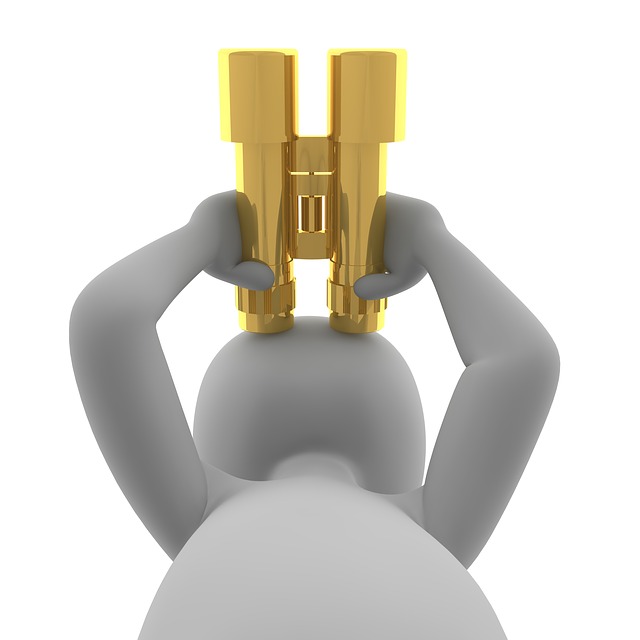
How to Find English Vocabulary to Study: 3 Options
Now that we’ve given you a handful of methods you can use for learning English vocabulary, here are a few tips on where to actually find new English words to study.
#1: Write Down Words You Hear and Read
This is perhaps one of the most practical methods for learning English vocabulary, and one I often used while living in Japan. Basically, you’ll keep a running list of any unfamiliar English words you hear or read in both your day-to-day life and studies.
For listening, some of the best resources to use for finding new words are as follows:
- Everyday conversation: Ideally, you’ll converse mostly with native English speakers; that said, it’s better to practice speaking with other English-language learners than with nobody at all!
- English movies and TV shows: Avoid turning on the subtitles for your native language. Instead, if you’re having trouble picking out key words, turn on the English subtitles; this will help you identify new words more quickly and let you see how they’re spelled.
- English podcasts: Start by browsing this excellent list of English podcasts for language learners. Then, find the ones that sound most interesting to you and start listening!
- YouTube: Find English videos on topics you’re interested in (and turn on English subtitles if needed).
For reading, try looking for new English words to practice in these resources:
- Newspapers: There are tons of high-quality English-language newspapers online. Intermediate speakers can start with easier English-news websites such as VOA Learning English and BBC Learning English, whereas advanced learners can dive right into popular news outlets such as CNN and The New York Times.
- Websites: Look for websites and blogs dealing with any topic of interest to you. I suggest looking for prominent websites with lots of followers to ensure that the English they use is high quality.
- Books and stories: What better way to learn new words than through your favorite fairy tales? Intermediate learners can start with children’s books and short stories, while advanced learners can jump to novellas and novels. Graphic novels are also excellent resources!
Once you’ve found vocabulary words you want to study, open a Word document on your computer and start making a list. You can then add words to this list whenever you come across ones you don’t know in your listening and reading practice.
Make sure to include most or all of the following elements on your vocabulary list:
- The word in English (spelled correctly!)
- Its part of speech
- The translation/meaning of the word in your native language
- An example sentence using the word
You can then use this list as your primary study list or to help you make flashcards and quizzes.
#2: Look for Free Word Lists Online
Another helpful option is to seek out pre-made English word lists. Waiting to hear or read new English vocabulary isn’t always practical for language learners, but you can luckily find many free English-word lists online using the websites mentioned above (e.g., Quizlet, Cram, Memrise, etc.).
If you want to study upper-level academic vocabulary, try looking specifically for vocabulary lists targeting popular college-admission tests, such as the TOEFL, GRE, SAT, and ACT. At PrepScholar, we’ve gathered all high-frequency words for these exams and even created free downloadable flashcards for the TOEFL (coming soon) and GRE.

#3: Use a Textbook
If you like having structure in your vocabulary studies, consider buying an English-language textbook or workbook. These books should give you plenty of new vocabulary words to study as well as lots of relevant exercises to help you memorize and retain them. Oftentimes, textbooks come with a built-in dictionary, too!
Make sure you’re choosing a book that’s highly reviewed and geared toward your English level. You can also try looking at books that specifically target the TOEFL. Unfortunately, English-language textbooks cater mostly to beginner and intermediate learners, so if you’re an advanced English speaker, you’ll likely benefit more from the two options above.
Conclusion: How to Learn English Vocabulary
There are many different ways to learn English vocabulary, from rote memorization and repetition to flashcards and quizzes. But in the end, it’s up to you to figure out which methods will work best for your learning style.
Here are some final pieces of advice to remember when studying English vocabulary:
- Don’t try to memorize every single word. English is believed to have the most words of any language, and I guarantee you won’t be able to learn all of them (even native English speakers don’t know every word!). Therefore, focus on memorizing the words you encounter most often. For everything else, use a dictionary!
- Ask for help if you get stuck. If you can’t remember the meaning of a particular word and don’t have a dictionary on hand, don’t be afraid to ask someone to define it for you. There’s nothing wrong with asking for help, and it’s certainly nothing to feel embarrassed about!
- Make studying English a habit. For a lot of people, it can be hard to find time to study English. But you’ll need a routine if you want to learn English words and actually remember them, so try to set aside at least 30 minutes every day to go through your study materials.
Good luck with your English studies!
What’s Next?
Need English-vocabulary words to study? Take a look at our list of 300+ high-frequency TOEFL words today! We also offer free vocabulary flashcards (coming soon) and PDFs (coming soon).
Want more tips on how to learn English? Start with our guide to learning English and figuring out your language goals (coming soon). Then, move on to our article on the best English-language games you can play (coming soon), with others or by yourself!
Planning to take the TOEFL? Then you’ll definitely want to read our expert tips on how to prepare for this tricky English test.
Ready to improve your TOEFL score by 15 points?
Download our best TOEFL Strategy eBook (valued at $14.49) for FREE! Learn the top 5 strategies you must know to improve your TOEFL score. Download it for free now:
